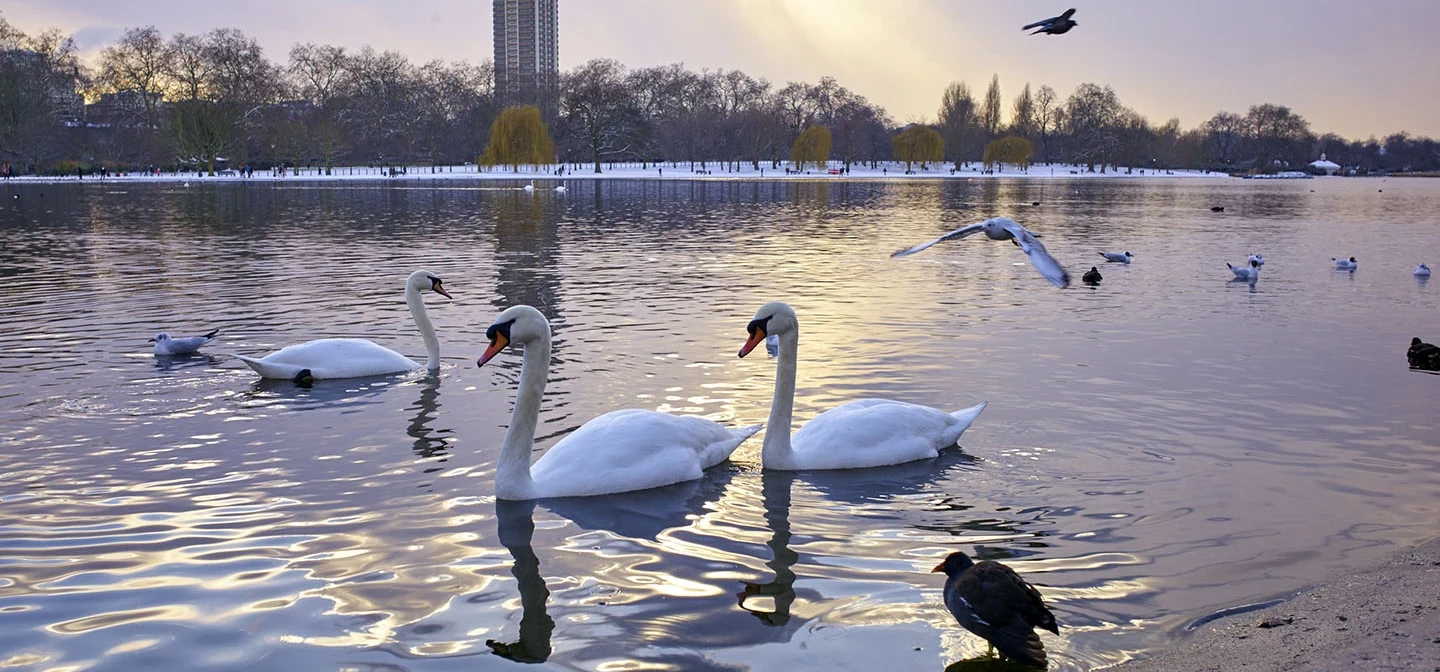
Wildlife in Hyde Park
Key information
Opening times (pedestrian gate)
Pedestrian gates 5am - midnight
Food & drink available
Shop open 10am - 6pm, 7 days a week
Hyde Park’s 350 acres are a unique mix of habitats and ecosystems, from the native wildflower Tyburn Meadow to the rustling reedbeds edging the Serpentine Lake, to acre upon acre of rolling grassland, majestic plane trees and sweet chestnuts. The meadowlands are key habitats for boosting biodiversity and growing the numbers of butterflies, bees and wildflowers.
The reedbeds established along the Serpentine Lake, near the Lido Café and Serpentine Bar & Kitchen are natural water purifiers – their root systems improve the water quality. The reeds attract summer visitors such as reed warblers, and provide year-round cover for nesting ducks, geese and swans. In summer, you’ll see dragonflies and the electric blue and purple damselflies, resting amongst the reeds between dazzling displays of aviation.
Grey heron, goldcrests and greater crested grebes – Hyde Park’s birds
Some birds in Hyde Park you just can’t miss. Stately pairs of Egyptian geese promenade up the centre of the paths. Gulls, cormorants and mallards are regular sights as they duck and dive for fish in the Serpentine Lake. If you’re lucky, you may catch a glimpse of great crested grebes courting with their ‘weed pattering dance’ (once you see it, the name will make sense!). We’ve even spotted buzzards circling overhead, and an occasional black swan.
Many of the tinier bird species, such as the goldcrest, the wren and many tits, are found in the naturalised gardens around the William Hudson Bird Memorial. Hudson was a founding member of the RSPB and believed passionately that every park should have pockets of wild, naturalised environments. We’re taking action to make this happen; sowing wildflower seeds, leaving some lawns long and creating deadwood hedges. Creating parkland sanctuaries for both people and wildlife can be a delicate balancing act.
If you’re looking for the herons, look for their delightfully messy nests on to Serpentine Island near the boathouses or spot them perching in the lakeside willows.
Listen out around the shrubs and herbaceous borders, and you’ll hear robins, wrens, great tits and other songbirds, or the noisy chatter of long-tailed tits.
Beetles, bugs and minibeasts – the wildlife at ground level
In a park the size of Hyde Park, it’s easy to miss some of our most valuable wildlife. Beetles, bees, wasp spiders and other invertebrates are all around – and working overtime. It’s amazing how much you see if you lie on the grass and watch for a minute. Children are natural mini-beast explorers – get their love of wildlife started early and join in on one of our Discovery Days at the Hyde Park Learning Centre.
These invertebrate creatures are fundamental to the park ecosystem – they’re our conservation partners.
Wildlife and parklife – the delicate balancing act
The Royal Parks are unique urban parklands, where people and wildlife can come together. We have a responsibility to protect and balance the best interests of the people, animals, birds, plants and planet for future generations.